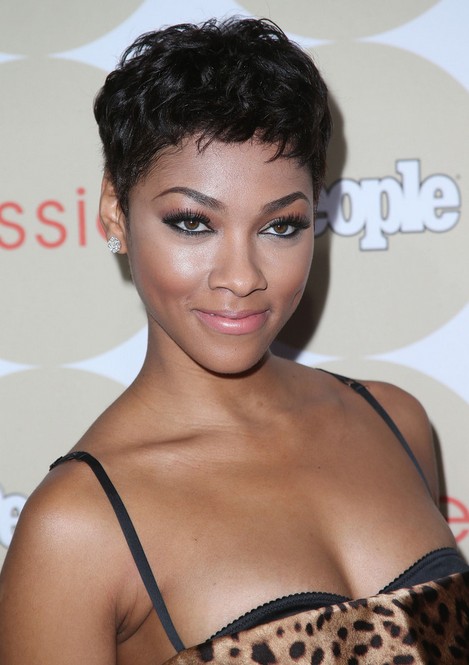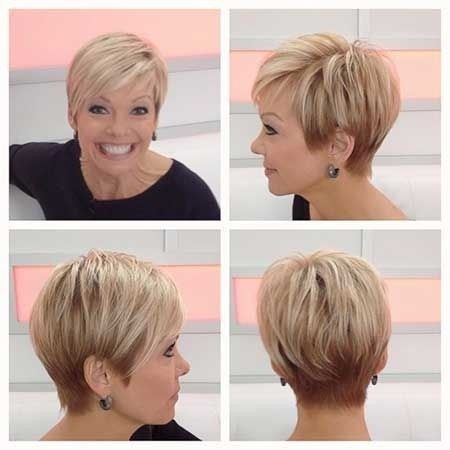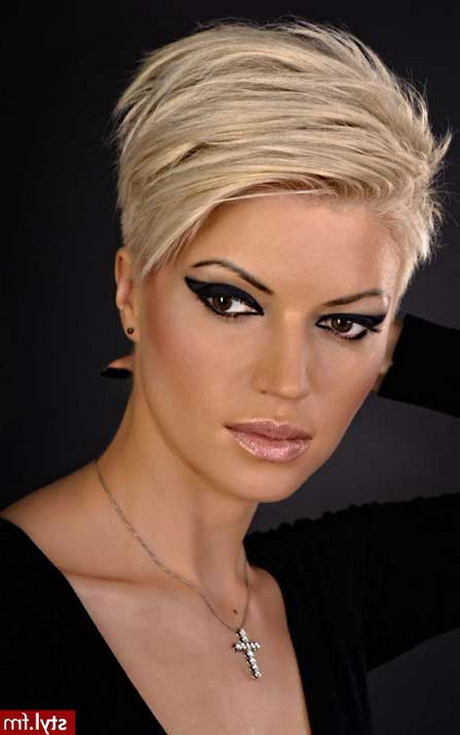 Hot Easy Short Hairstyles for Womenhttp://www.circletrest.com/wp-content/uploads/2013/07/Hot-Easy-Short-Hairstyles-for-Women.jpg
Hot Easy Short Hairstyles for Womenhttp://www.circletrest.com/wp-content/uploads/2013/07/Hot-Easy-Short-Hairstyles-for-Women.jpg
Hottest Short Hairstyles Women
A hair, hairdo, or haircut refers to the styling of locks, usually on the human being head. Sometimes, this could mean an editing and enhancing of beard scalp also. The fashioning of hair can be considered an element of personal grooming, fashion, and cosmetics, although practical, cultural, and popular things to consider impact some hairstyles also. The oldest known depiction of hair braiding dates back about 30,000 years. In ancient civilizations, women's hair was often elaborately and carefully dressed up in special ways. In Imperial Rome, women wore their mane in complicated styles. From the time of the Roman Empire[citation needed] before Middle Ages, most women grew their hair as long as it would naturally expand. During the Roman Empire as well as in the 16th century in the western world, women started out to wear their hair in extremely ornate styles. In the later half of the 15th century and on into the 16th century a very high hairline on the forehead was considered attractive. Through the 15th and 16th decades, Western european men wore their hair cropped no longer than shoulder-length. In the early 17th century male hairstyles grew longer, with curls or waves being considered advisable.
The male wig was pioneered by Ruler Louis XIII of France (1601-1643) in 1624. Periwigs or perukes for men were created in to the English-speaking world with other French styles in 1660. Late 17th-century wigs were lengthy and wavy, but became shorter in the mid-18th century, by which time these were white normally. Short hair for fashionable men was something of the Neoclassical movement. In the early 19th hundred years the guy beard, and moustaches and sideburns also, made a strong reappearance. From 16th to the 19th hundred years, European women's mane became more obvious while their hair coverings grew smaller. In the center of the 18th hundred years the pouf style developed. Through the First World War, women around the world started to shift to shorter hairstyles that were better to manage. In the first 1950s women's hair was generally curled and worn in a variety of styles and lengths. In the 1960s, many women began to wear their wild hair in a nutshell modern cuts including the pixie cut, while in the 1970s, mane tended to be longer and looser. In both the 1960s and 1970s many men and women wore their hair lengthy and straight. In the 1980s, women pulled back their hair with scrunchies. During the 1980s, punk hair styles were followed by some social people.
Throughout times, people have worn their hair in a wide variety of styles, largely determined by the fashions of the culture they live in. Hairstyles are signifiers and markers of social class, age, marital status, racial identification, political beliefs, and attitudes about gender.
In many civilizations, for religious reasons often, women's hair is protected while in public areas, and in some, such as Haredi Judaism or Western european Orthodox communities, women's mane is shaved or trim very short, and covered with wigs.Only because the end of World Conflict I've women begun to wear their locks brief and in reasonably natural styles.
Paleolithic
- The oldest known duplication of mane braiding lies back about 30,000 years: the Venus of Willendorf, known in academia as the Woman of Willendorf now, of a female figurine from the Paleolithic, predicted to have been made between about 28,000 and 25,000 BCE.The Venus of Brassempouy matters about 25,000 years old and shows hairstyling indisputably.
Bronze Age
- In Bronze Age razors were known and in use by some men, however, not on a daily basis since the method was rather upsetting and required resharpening of the tool which reduced its strength.
Ancient history
- In historical civilizations, women's locks was often elaborately and carefully dressed up in special ways. Women coloured their mane, curled it, and pinned it up (ponytail) in many ways. They collection their head of hair in curls and waves using wet clay, that they dried out in sunlight and combed out then, if not by utilizing a jelly made of quince seeds soaked in normal water, or curling tongs and curling irons of varied kinds.
Roman Empire and DARK AGES
- Between 27 BC and 102 Advertising, in Imperial Rome, women wore their hair in complicated styles: scores of curls at the top, or in rows of waves, attracted back to braids or ringlets. Eventually noblewomen's hairstyles grew so complex that they required daily attention from several slaves and a stylist to become maintained. The locks was often lightened using hardwood ash, unslaked lime and sodium bicarbonate, or darkened with copper filings, oak-apples or leeches marinated in wine beverages and vinegar. It was augmented by wigs, hairpieces and pads, and held in place by nets, pins, combs and pomade. Beneath the Byzantine Empire, noblewomen covered almost all of their hair with silk pearl and caps nets.
Best HAIRSTYLES For Short Hair Women
- It is vital to find the best short hairstyles for girls since it plays a huge part of your look. Having the right hairstyle can offer you with happiness and positive emotions. Find out which hairstyle is simply perfect for your personality and character. You should talk to your hairstylist before having a new haircut also. After all, changes are great and it can add positive perspective in your life also. Feel free to browse our collection of short hairstyles for girls and choose the one that your like best.
90+ Hottest Short Hairstyles for 2016: Best Short Haircuts for Women
 http://hairstylesweekly.com/images/2013/11/065848kPC.jpg
http://hairstylesweekly.com/images/2013/11/065848kPC.jpg22 Hottest Short Hairstyles for Women 2017 Trendy Short Haircuts to
 http://hairstylesweekly.com/images/2014/09/Best-Short-Haircuts-for-2015.jpg
http://hairstylesweekly.com/images/2014/09/Best-Short-Haircuts-for-2015.jpg30 Best Short Hair Cuts Short Hairstyles 2015 2016 Most Popular
 http://www.short-haircut.com/wp-content/uploads/2016/05/Best-Short-Haircuts.jpg
http://www.short-haircut.com/wp-content/uploads/2016/05/Best-Short-Haircuts.jpgMost Popular Short Hairstyles For Women 2014 Pictures to pin on
 http://gvenny.com/images5/0316/most-popular-short-hairstyles-for-2016/most-popular-short-hairstyles-for-2016-20_7.jpg
http://gvenny.com/images5/0316/most-popular-short-hairstyles-for-2016/most-popular-short-hairstyles-for-2016-20_7.jpgOIP.Maf7b621db030631e59e71b1ca3339397H1
19566B3E29975DCE621C838D9583CFC3AB0911EF09http://www.circletrest.com/hot-easy-short-hairstyles-women/
Embed Our image to your website
ThumbnailImageEmbed Our image to a Forum
ThumbnailImage








.jpg)
.jpg)

